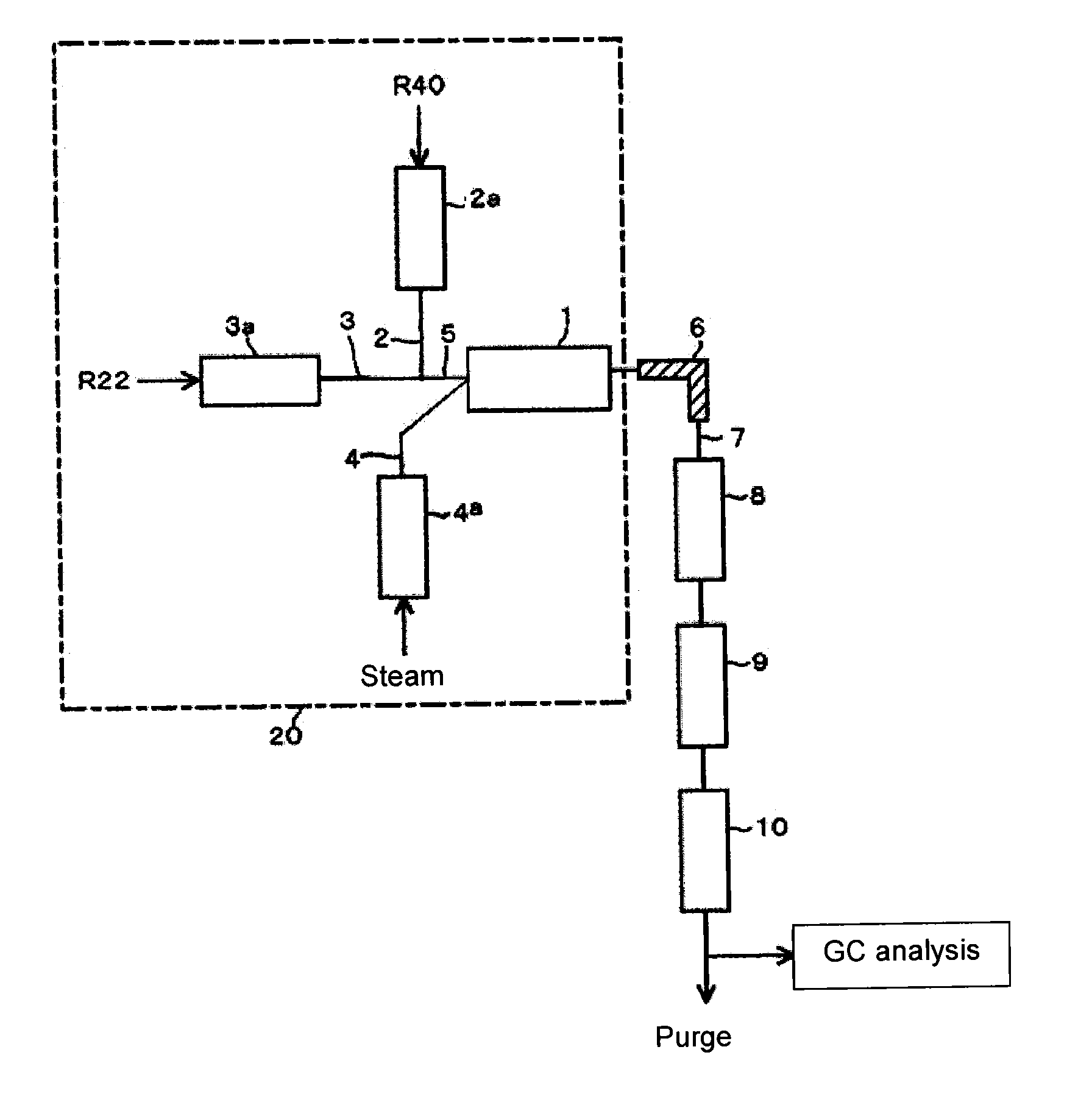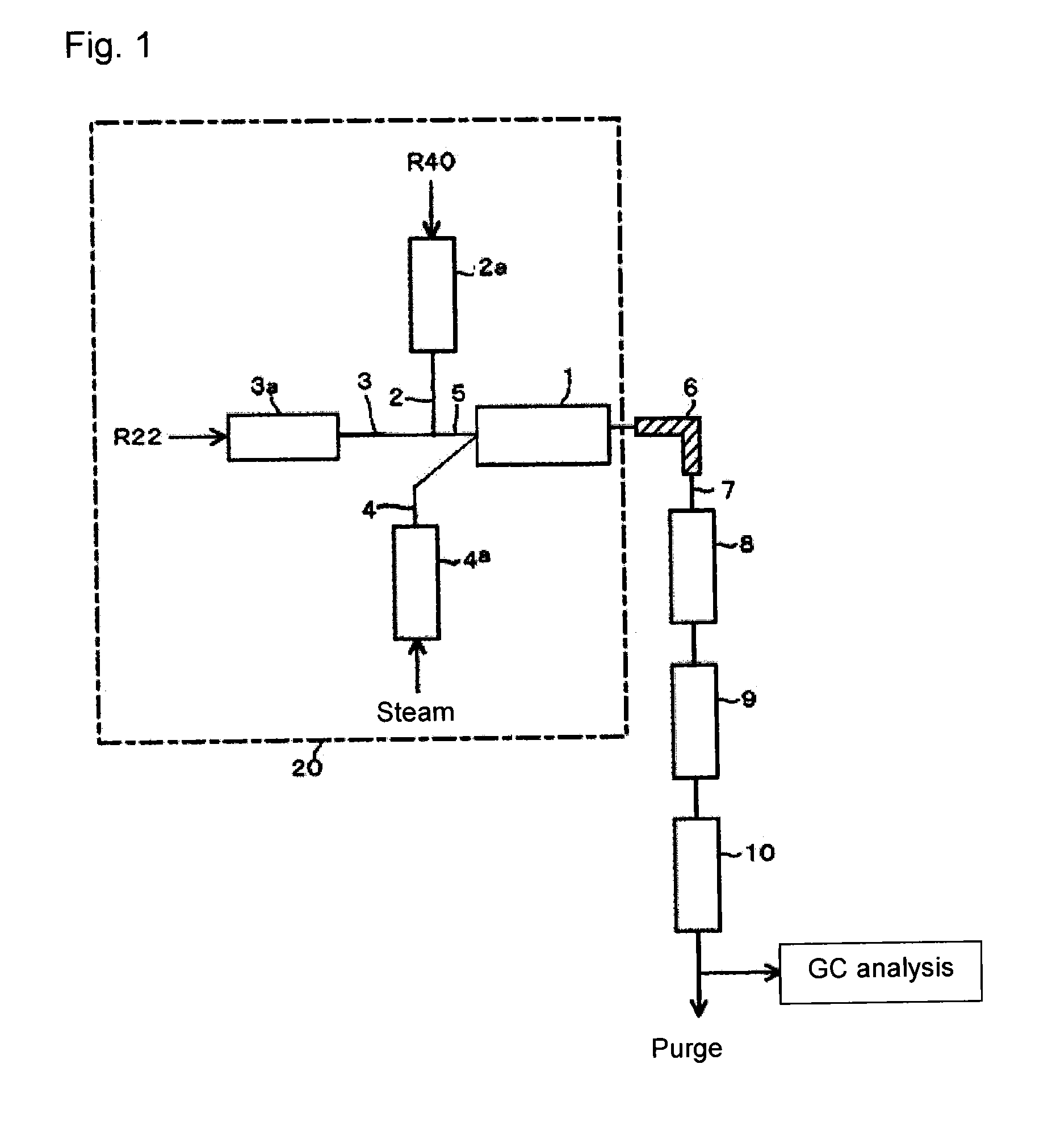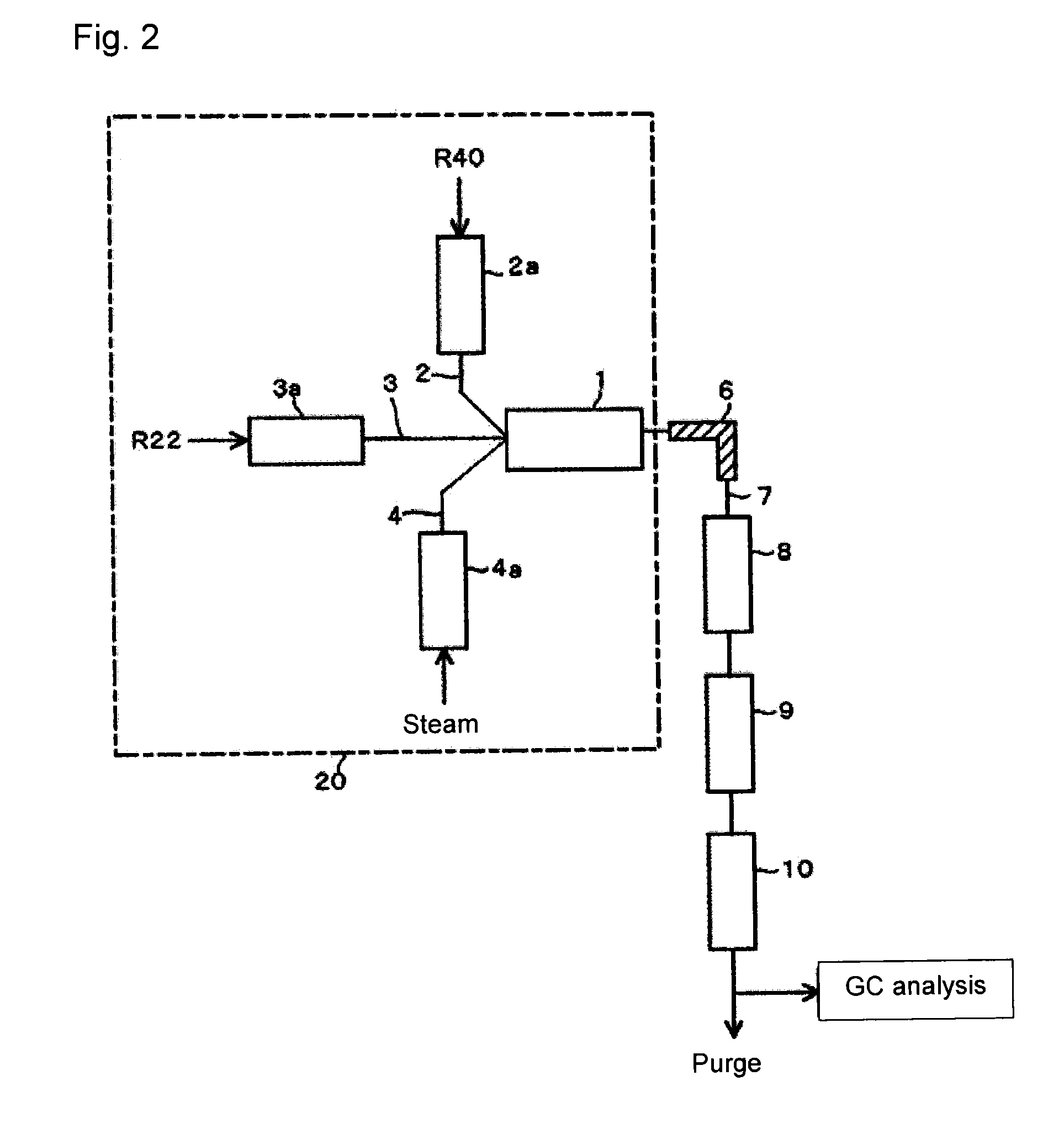Process for producing 2, 3, 3, 3-tetrafluoropropene
- Summary
- Abstract
- Description
- Claims
- Application Information
AI Technical Summary
Benefits of technology
Problems solved by technology
Method used
Image
Examples
example 1
[0063]Using the reaction apparatus as shown in FIG. 1, from a raw material gas comprising R22 and R40, crude HFO-1234yf was obtained as follows.
[0064]Into a stainless steel tube preheater 2a in an electric furnace set at an internal temperature of 500° C., R40 was continuously introduced, and R40 was heated to 500° C. Further, into a stainless steel tube preheater 3a in an electric furnace set at an internal temperature of 500° C., R22 was continuously introduced, and R22 was heated to 500° C.
[0065]Steam (water vapor) heated by a heated-steam generator 4a as an electric furnace set at an internal temperature of 850° C. was supplied to the reactor 1 controlled to have an internal temperature of 850° C. under 0.04 MPa. Further, the raw material gas components (R40 and R22) preheated and adjusted to the above temperature were supplied to the reactor 1 so that the molar ratio of the supply amounts of the raw material components would be R40 / R22=1.5, and the supply proportion of steam to...
examples 2 to 4
[0081]The reaction was conducted under the same conditions as in Example 1 except that the molar ratio (R40 / R22) of the supply amount of R40 to the supply amount of R22 was changed as shown in Table 1. Then, the gas of a reaction mixture withdrawn from the outlet of the reactor was treated in the same manner as in Example 1, and then, the obtained outlet gas was analyzed in the same manner as in Example 1. The results are shown in Table 1 together with the reaction conditions.
example 5
[0083]In the same manner as in Example 1, using the apparatus as shown in FIG. 2, from raw material gas comprising R22 and R40, crude HFO-1234yf was obtained as follows.
[0084]Into a stainless steel tube in an electric furnace set at an internal temperature of 600° C., R40 was continuously introduced, and R40 was heated to 600° C. Further, into a stainless steel tube in an electric furnace set at an internal temperature of 300° C., R22 was continuously introduced, and R22 was heated to 300° C.
[0085]These raw material gas components (R40 and R22) preheated and adjusted to the above temperatures, and steam (water vapor) heated by an electric furnace set at an internal temperature of 750° C., were adjusted so that the molar ratio of the supply amounts of the raw material components would be R40 / R22=3, and the supply proportion of steam to the entire gas supply amount (i.e. the proportion represented by a volume ratio of steam / (R40+R22+ steam)) would be 90 vol %, and supplied to a reacto...
PUM
| Property | Measurement | Unit |
|---|---|---|
| Temperature | aaaaa | aaaaa |
| Temperature | aaaaa | aaaaa |
| Temperature | aaaaa | aaaaa |
Abstract
Description
Claims
Application Information
 Login to View More
Login to View More - R&D Engineer
- R&D Manager
- IP Professional
- Industry Leading Data Capabilities
- Powerful AI technology
- Patent DNA Extraction
Browse by: Latest US Patents, China's latest patents, Technical Efficacy Thesaurus, Application Domain, Technology Topic, Popular Technical Reports.
© 2024 PatSnap. All rights reserved.Legal|Privacy policy|Modern Slavery Act Transparency Statement|Sitemap|About US| Contact US: help@patsnap.com










